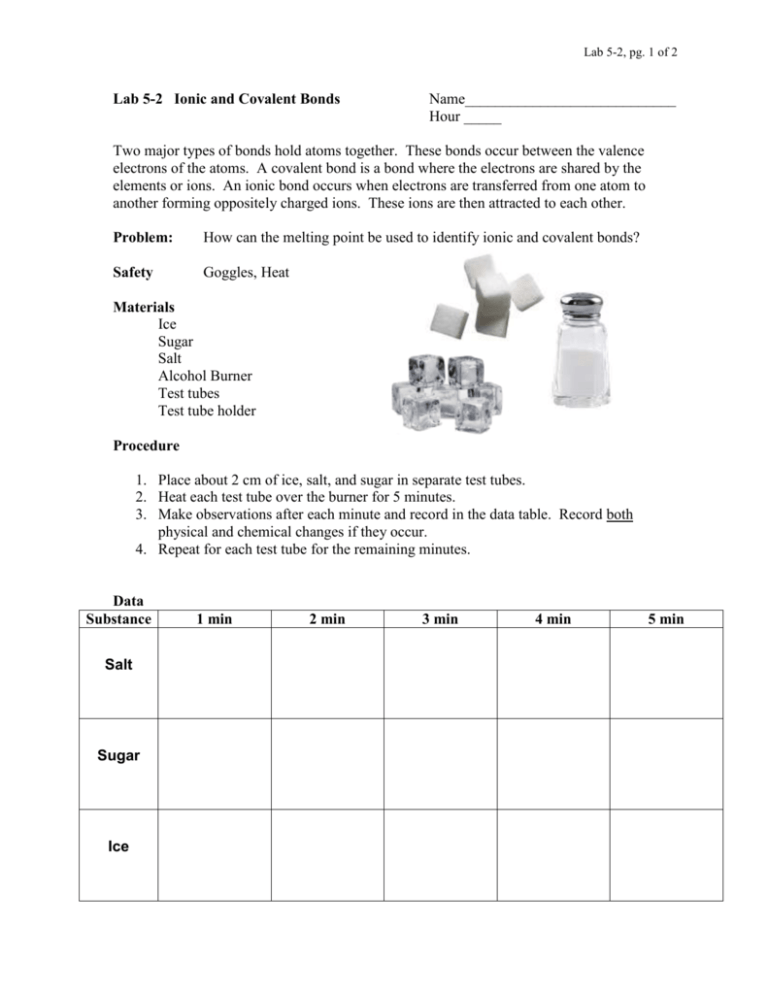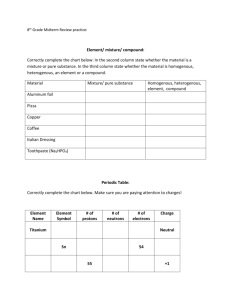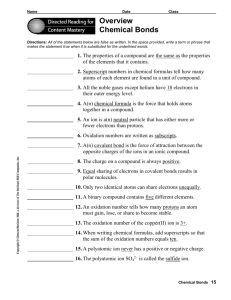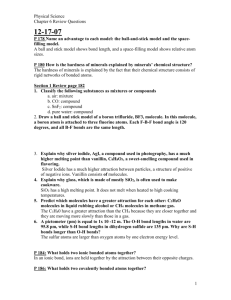Ionic and Covalent Bonds Lab Worksheet
advertisement

Lab 5-2, pg. 1 of 2 Lab 5-2 Ionic and Covalent Bonds Name____________________________ Hour _____ Two major types of bonds hold atoms together. These bonds occur between the valence electrons of the atoms. A covalent bond is a bond where the electrons are shared by the elements or ions. An ionic bond occurs when electrons are transferred from one atom to another forming oppositely charged ions. These ions are then attracted to each other. Problem: How can the melting point be used to identify ionic and covalent bonds? Safety Goggles, Heat Materials Ice Sugar Salt Alcohol Burner Test tubes Test tube holder Procedure 1. Place about 2 cm of ice, salt, and sugar in separate test tubes. 2. Heat each test tube over the burner for 5 minutes. 3. Make observations after each minute and record in the data table. Record both physical and chemical changes if they occur. 4. Repeat for each test tube for the remaining minutes. Data Substance Salt Sugar Ice 1 min 2 min 3 min 4 min 5 min Lab 5-2, pg. 2 of 2 Conclusion 1. Why did you need to start with ice instead of water? 2. Which compound(s) appear to be ionic? 3. Why? 4. What does the energy do while the compound changes state? 5. What type of change is a change in state of matter? 6. What can you conclude about the forces between atoms in an ionic compound? 7. What can you conclude about the forces between atoms in a covalent compound? 8. What type of bond would you predict to have a higher boiling point? 9. If butter easily melts over popcorn, what type of bond does it have? 10. What happens to the valence electrons in a covalent bond? 11. What are the chemical formulas for salt, sugar and ice? 12. Give two other examples of covalent compounds (may be liquids or gases at room temperature). 13. Give two other examples of ionic compounds (may be liquids or gases). 14. There are two types of covalent bonds. Name and describe both of them. 15. The label on a tube of toothpaste states that it contains a compound that prevents decay. This compound, sodium fluoride, (NaF) is an ionic compound. Draw an electron diagram that shows how these elements will become an ionic compound.










